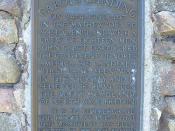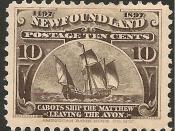In 1497, John Cabot (Giovanni Cabotto) set off on a voyage to Asia. On his way he, like Christopher Columbus, ran into an island off the coast of North America. As a result, Cabot became the second European to discover North America, thus laying an English claim which would be followed up only after an interval of over one hundred years. With such an interlude, his voyage seems mainly of academic interest. Although it is true that prior discovery was often used as a justification for colonization,1 the great amount of time between discovery and colonizing reduces Cabots importance to a minimum in this regard. However, this is not at all to say that Cabot was unimportant. In becoming the first European to land on these shores since the time of Leif Erikson, Cabot opened up the Grand Banks to a steady encroachment of European fishermen, thus paving the way for eventual colonization.2
His voyage marked Englands first foray into the new age of discovery, and served as a foundation for Englands later claims to North America, albeit at some remove. With his importance so established, it is natural that scholars continue to study Cabots heroic travels and try to pinpoint them. Sadly, the vagueness of the evidence makes this effort futile except in a very general way.
John Cabot knew the world was much bigger around than Columbus claimed, and that it thus would be impossible to sail straight from Spain to Asia. He had a simple yet ingenious plan, to start from a northerly latitude where the longitudes are much closer together, and where, as a result, the voyage would be much shorter. Sailing west in the bark Mathew, he could reach land comparatively quickly, revictual, and coast southward until he found "Cipango," or Japan.3
This scheme...



Outstanding!!!!
This essay is very thorough and could be used for many purposes
0 out of 0 people found this comment useful.